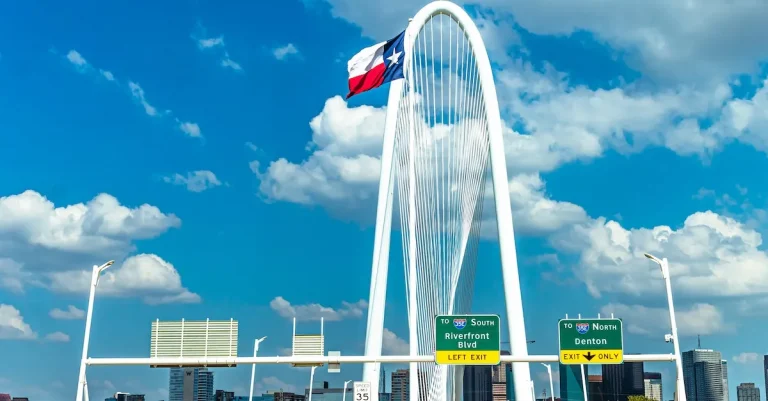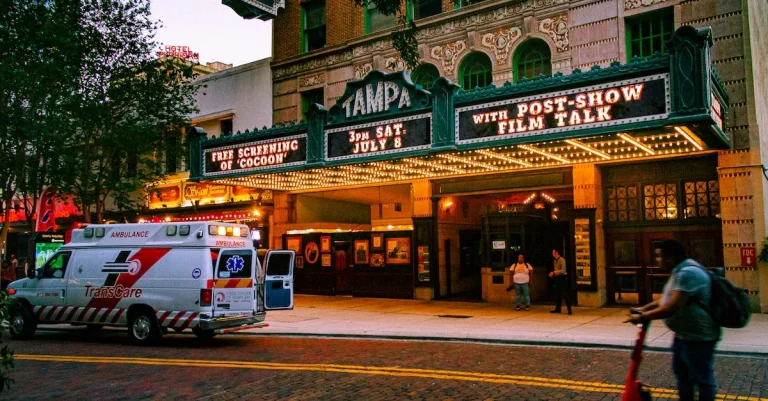How Long Before They Repo A Car In California?
Falling behind on your car payments can be stressful. Your lender has the legal right to repossess your vehicle if you default on your auto loan agreement. But how much time do you actually have before the repo man shows up at your door in California? If you’re looking for a quick answer, here it is: Your vehicle can legally be repossessed after just 1 day of missed payments in California. However, the typical grace period is 30-60 days.
In this comprehensive guide, we’ll cover everything you need to know about car repossession timelines in California. We’ll look at repossession laws, lender policies, options to prevent repossession, and what to do if your vehicle gets repossessed.
California Repossession Laws and Policies
When it comes to car repossession in California, there are specific laws and policies in place to protect both the borrower and the lender. Understanding these regulations can help you navigate the process and make informed decisions. Here are some key points to consider:
State repossession laws
California has specific laws in place that govern the repossession of vehicles. According to the California Civil Code Section 2983.2, a lender has the right to repossess a vehicle if the borrower defaults on their loan.
However, the lender must follow certain guidelines during the repossession process.
For example, the lender cannot breach the peace while repossessing the vehicle. This means they cannot use physical force or threats to take possession of the car. They also cannot enter a locked or closed property without the borrower’s permission.
Additionally, California law requires lenders to provide the borrower with a written notice of their intent to repossess the vehicle. This notice must be sent at least 15 days before the repossession takes place.
The notice should include information about the borrower’s right to reinstate the loan and the amount owed.
Lender repossession policies
While California state laws outline the general guidelines for repossession, each lender may have its own specific policies and procedures in place. These policies can vary from lender to lender, so it’s important to review your loan agreement and contact your lender directly to understand their specific repossession policies.
Some lenders may allow for a grace period if a borrower falls behind on their payments. During this time, the borrower may have the opportunity to catch up on missed payments and avoid repossession. Others may have stricter policies and initiate repossession proceedings more quickly.
It’s important to communicate with your lender if you’re experiencing financial difficulties and are unable to make your car payments. They may be able to work out a repayment plan or offer alternative solutions to help you avoid repossession.
Right to reinstate loan
In California, borrowers have the right to reinstate their loan after repossession. This means that if the lender repossesses the vehicle, the borrower can pay off the outstanding balance, along with any additional fees or costs, and reclaim their car.
However, it’s important to note that the borrower must act quickly to exercise this right. California law states that the borrower has the right to reinstate the loan within 15 days of repossession or until the vehicle is sold at auction, whichever comes first.
Reinstating the loan can be a viable option for borrowers who want to keep their car but are currently facing financial difficulties. However, it’s important to carefully consider your financial situation and consult with a legal professional before making any decisions.
For more information about California repossession laws and policies, you can visit the official website of the California Department of Consumer Affairs at https://www.dca.ca.gov/.
Timeline: How Long Before Repossession in CA
After 1st missed payment
Once a car payment is missed in California, the clock starts ticking on the repossession process. Typically, lenders will start taking action after the first missed payment. It’s important to note that this timeline may vary depending on the lender and their specific policies.
According to California DMV, if you miss a payment, the lender may send you a notice demanding payment or asking you to surrender the car voluntarily. This is the initial step towards repossession, and it’s crucial to address the situation promptly.
Typically 30-60 days
In California, lenders usually give borrowers a grace period of around 30 to 60 days after the first missed payment. During this time, they may try to contact the borrower to resolve the issue and bring payments up to date.
It’s essential to communicate with the lender and work out a solution during this period to avoid repossession.
According to California Courts, the lender may also send a “Notice of Intent to Sell” after the grace period has passed. This notice informs the borrower of the lender’s intention to sell the repossessed vehicle.
It’s crucial to be aware of these timelines and take appropriate action to prevent repossession.
Varies by lender
The specific timeline for repossession can vary from lender to lender in California. Some lenders may have more lenient policies, while others may be more aggressive in pursuing repossession. It’s important to carefully review the terms and conditions of your loan agreement to understand the specific procedures and timelines set by your lender.
If you’re unsure about the repossession process or need assistance in dealing with your lender, it may be helpful to seek legal advice. A qualified attorney can guide you through the process and help protect your rights.
Options to Prevent Car Repossession
Facing the possibility of having your car repossessed can be a stressful experience. However, there are several options available in California that can help prevent this from happening. By understanding and utilizing these options, you can take steps to keep your car and avoid the hassle of repossession.
Reinstate your loan
If you have fallen behind on your car loan payments, reinstating your loan may be an option to consider. This involves paying the past-due amount, as well as any additional fees or penalties, in order to bring your loan current.
By doing so, you can avoid repossession and resume making regular payments. It’s important to contact your lender as soon as possible to discuss the reinstatement process and any specific requirements they may have.
Loan modification
Another option to prevent car repossession is to request a loan modification from your lender. This involves negotiating with the lender to change the terms of your loan, such as lowering the interest rate or extending the repayment period.
A loan modification can make your monthly payments more affordable and help you avoid repossession. Keep in mind that approval for a loan modification is not guaranteed, and you may need to provide documentation of your financial hardship.
Voluntary repossession
While it may seem counterintuitive, voluntary repossession is another option to consider. This involves contacting your lender and informing them that you are unable to continue making payments on your car loan.
By voluntarily surrendering the vehicle, you can avoid the negative consequences of involuntary repossession, such as having the car towed from your driveway. It’s important to note, however, that voluntary repossession will still negatively impact your credit score.
Sell your car
If you are unable to make your car loan payments and are facing repossession, selling your car may be a viable solution. By selling the car, you can use the proceeds to pay off the remaining balance of your loan.
This option allows you to avoid repossession and potentially minimize the impact on your credit score. It’s important to act quickly and find a buyer as soon as possible to prevent further financial strain.
Remember, each situation is unique, and it’s important to carefully consider your options and consult with a financial advisor or credit counselor to determine the best course of action for your specific circumstances.
For more information and resources on preventing car repossession in California, you can visit the California Department of Consumer Affairs website at www.dca.ca.gov.
What to Do When Your Car is Repossessed
Having your car repossessed can be a stressful and overwhelming experience. However, it’s important to stay calm and take the necessary steps to resolve the situation. Here are some important things you should do when your car is repossessed in California.
Contact your lender
The first thing you should do when your car is repossessed is to contact your lender. It’s important to understand the reason behind the repossession and try to negotiate a solution. Discussing the situation with your lender can help you understand your options and potential ways to resolve the issue.
Pay repossession fees
Once your car has been repossessed, you will be responsible for paying repossession fees. These fees can include towing charges, storage fees, and other related expenses. It’s crucial to find out the exact amount you owe and make arrangements to pay the fees as soon as possible to avoid any further complications.
Retrieve personal property
When your car is repossessed, you may have personal belongings inside it. It’s important to act quickly and retrieve any personal property before it is lost or damaged. Contact the repossession company or your lender to arrange a time to collect your belongings.
Be prepared to provide proof of ownership or any necessary documentation.
Consider alternatives
If you find yourself unable to retrieve your repossessed car or pay the outstanding fees, it’s essential to explore alternative options. One option is to negotiate with your lender to reinstate the loan or set up a repayment plan.
Another option could be to explore refinancing or obtaining a new loan to pay off the remaining balance. It’s important to consider all available alternatives and choose the one that best suits your financial situation.
Remember, having your car repossessed can be a challenging situation, but taking the right steps can help you resolve it effectively. If you need more information or assistance, consider reaching out to a financial advisor or consulting resources like the official website of the California Department of Motor Vehicles.
Recovering from Car Repossession
Experiencing a car repossession can be a challenging and stressful situation. However, there are steps you can take to recover from it and get back on track. Here are some helpful strategies:
Repair your credit
One of the first steps to take after a car repossession is to start repairing your credit. A repossession can significantly impact your credit score, making it harder to secure loans or credit in the future. To start rebuilding your credit, you can:
- Obtain a copy of your credit report and review it for any errors
- Pay off any outstanding debts or collections
- Make all future payments on time
- Consider working with a credit counseling agency for guidance
By taking these steps, you can gradually improve your credit score and increase your chances of obtaining financing in the future.
Get a cosigner
If your credit score is still low after a repossession, you may need a cosigner to help you secure a loan for a new car. A cosigner is someone with good credit who agrees to take responsibility for the loan if you default.
Having a cosigner can increase your chances of getting approved for a car loan and may even help you secure better interest rates.
Buy a beater car
If you are unable to secure a loan for a new car or prefer not to take on additional debt, you can consider purchasing a “beater” car. These are older, inexpensive cars that may not be in the best condition but can still get you from point A to point B.
While this may not be a long-term solution, it can provide you with transportation until you are able to improve your financial situation.
Improve finances
Finally, it’s crucial to take steps to improve your overall financial situation to prevent future car repossession. This may include:
- Creating a budget and sticking to it
- Reducing unnecessary expenses
- Increasing your income through additional work or side gigs
- Building an emergency fund to cover unexpected expenses
By actively working on improving your finances, you can reduce the risk of facing another car repossession in the future.
Recovering from a car repossession takes time and effort, but it is possible to bounce back. By repairing your credit, considering a cosigner, exploring alternative transportation options, and improving your financial situation, you can regain control of your finances and move forward with confidence.
Conclusion
Getting your car repossessed can be devastating, but understanding California repossession laws and lender policies can help you avoid repossession or get your vehicle back. Act quickly within the typical 30-60 day grace period to get caught up on payments or negotiate alternatives with your lender. With prompt action, you may be able to reinstate your loan and recover from car repossession.








